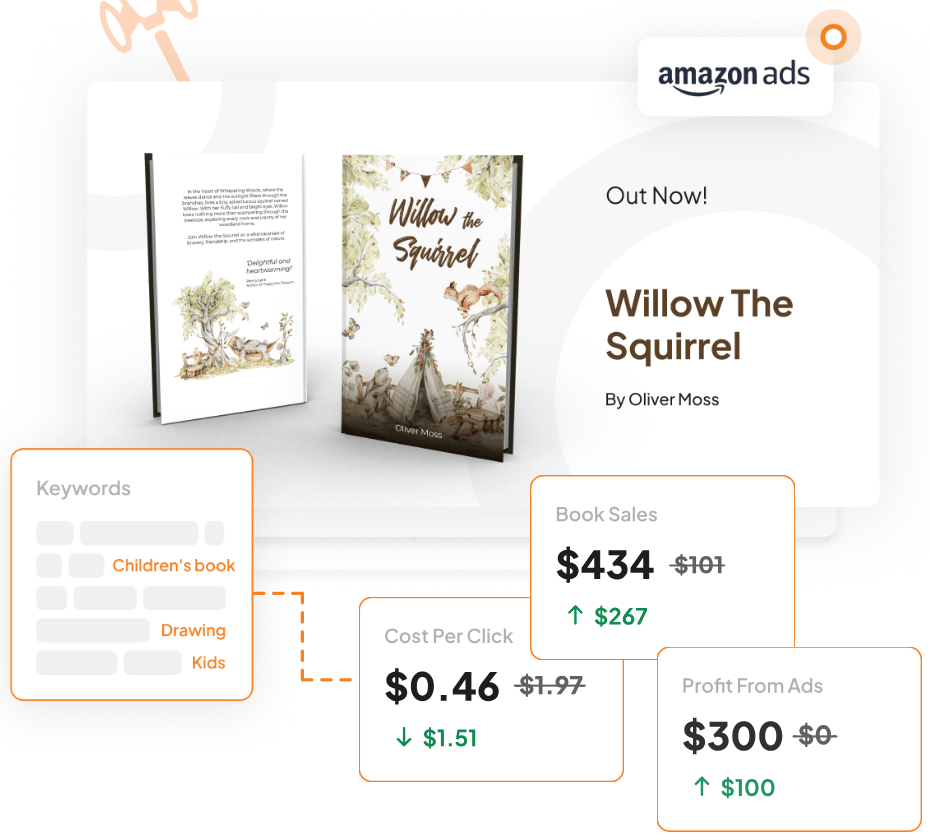Imagine a world where hearts flutter and emotions ignite, a place where the power of love transforms even the most mundane moments into something magical.
Writing a romance novel is your ticket to crafting a world, where you can explore the depths of human emotion and create stories that resonate with readers.
Whether you’re a seasoned writer or just starting, this guide will provide you with the tools and inspiration to pen a love story that will capture the hearts of many.
Understanding Romance Novels
Romance novels have been beloved for centuries, captivating readers with tales of love, passion, and emotional journeys. But what exactly defines a romance novel, and what are its essential elements?
Feeling lost with your debut novel?
Fiverr Pro connects you with expert editors, designers, and marketers – everything you need to get your book ready for success!

Defining the Romance Genre
A romance novel’s core revolves around a central romantic relationship between two characters. The narrative explores the development of their connection, focusing on themes of love, passion, attraction, and emotional intimacy.
While the setting can vary—from contemporary urban landscapes to historical eras or fantastical worlds—the heart of a romance story remains the emotional bond between the protagonists.
This genre often promises a satisfying conclusion, commonly referred to as “happily ever after” (HEA) or “happy for now” (HFN), leaving readers with a sense of fulfillment and hope.
Key Elements of a Romance Novel
Crafting a compelling romance novel requires a blend of several key elements:
- Well-Developed Characters: Characters should be multidimensional, relatable, and possess backstories that allow readers to connect with them emotionally.
- Strong Chemistry and Romantic Tension: A successful romance builds palpable chemistry and tension between the protagonists, keeping readers invested in their journey.
- Engaging Plot: The plot should be well-paced, with intriguing twists and turns that challenge the characters and their relationship.
- Emotional Depth: Delve into the characters’ emotions, exploring their vulnerabilities, fears, and desires to create an authentic emotional journey.
- Conflict and Obstacles: Introduce significant challenges that the characters must overcome to be together, adding drama and suspense.
- Satisfying Resolution: Provide a believable and fulfilling resolution to the central relationship, ensuring a sense of closure and contentment.

Crafting Compelling Characters
Characters are the heart and soul of any romance novel. Their journey from strangers to lovers is what captivates readers and makes them root for a happy ending.
Character Development in Romance
Creating well-rounded characters involves more than just giving them names and appearances. Consider their goals, motivations, and conflicts.
What drives them? What are their deepest fears and desires? Understanding these aspects will help you create characters that feel real and relatable.
Develop character profiles for your protagonists. Include details about their past, personality traits, and key life events that have shaped them. This will help you maintain consistency and depth throughout your story.
Creating Relatable Heroes and Heroines
Your heroes and heroines should be individuals with strengths, flaws, and unique qualities. They should evolve throughout the story, growing and learning from their experiences. Avoid stereotypes and strive to create characters who feel genuine and complex.
Google Docs is for notes. Scrivener is for novels. Upgrade your writing game and try it for free today!

Building Chemistry and Tension
The chemistry between your characters draws readers in. Create situations that bring them together and reveal their compatibility while also introducing obstacles that heighten the tension. This push-and-pull dynamic keeps readers engaged and eager to see how the relationship unfolds.
Plotting Your Romance Novel
The plot structure of your romance novel serves as the backbone of your story, guiding your characters through their emotional journey.
Understanding Plot Structure for Romance
A romance novel typically follows a three-act structure: the setup, the confrontation, and the resolution. Each act serves a specific purpose in advancing the plot and deepening the characters’ relationships.
Outline your plot using the three-act structure. Identify key events and turning points to drive the story forward and keep readers invested.

The Three Act Structure in Romance
The first act introduces the characters and their world, setting the stage for the romance to blossom.
The second act explores the relationship’s development, introducing conflicts and challenges that test the characters’ commitment. Finally, the third act resolves these conflicts, leading to a satisfying conclusion.
Essential Romance Beats
Within the three-act structure, there are specific beats that are essential to a romance novel:
| Beat | Description |
|---|---|
| Meet Cute | The moment when the protagonists first meet, setting the stage for their relationship. |
| First Kiss | A pivotal moment that deepens the emotional connection between the characters. |
| Dark Moment | A major conflict or obstacle that threatens to tear the characters apart. |
| Resolution | The characters overcome their challenges and commit to each other, resulting in a happy ending. |
Writing Engaging Scenes
Scenes are the building blocks of your romance novel, bringing your characters and plot to life through vivid descriptions and dynamic interactions.
The Importance of the Meet Cute
The “meet cute” is a crucial scene that sets the tone for the relationship. It should be memorable and engaging, sparking interest and curiosity in the reader.
Whether it’s a chance encounter or a humorous mishap, the meet cute lays the foundation for the romance to unfold.
Crafting Intimate Moments
Intimate moments are the heart of a romance novel, allowing characters to express their feelings and deepen their connection. These scenes should be emotionally charged and authentic, reflecting the characters’ growth and vulnerability.
Use sensory details to enhance intimate scenes. Describe the sights, sounds, and emotions surrounding the characters, immersing readers in the moment.

Creating Conflict and Resolution
Conflict is essential to any romance novel, providing tension and drama that keeps readers engaged. Introduce obstacles that challenge the characters’ relationship, and use these conflicts to drive the plot forward. Ultimately, the resolution should be satisfying and believable, offering a sense of closure and hope for the future.
Polishing Your Manuscript
Once you’ve completed your draft, it’s time to refine and polish your manuscript, ensuring it shines and captivates readers.
Editing and Revising Your Work
Editing is a crucial step in the writing process. It allows you to refine your prose, enhance your characters, and strengthen your plot. Review your manuscript critically, looking for areas that need improvement or clarification.
Read your manuscript aloud to catch awkward phrasing or inconsistencies. Hearing your words can provide a new perspective and help you identify areas for improvement.
No marketing platform? No social following? No problem!
Publisher Rocket helps you market your debut novel like a pro.
It’s a gamechanger for debut authors – try it today!


Seeking Feedback and Support
Feedback from beta readers or writing groups can provide valuable insights into your manuscript’s strengths and weaknesses. Be open to constructive criticism and use it to enhance your story.
Additionally, consider seeking support from fellow writers, who can offer encouragement and advice throughout your writing journey.
Publishing Your Romance Novel
With a polished manuscript in hand, you’re ready to embark on the path to publication and share your love story with the world.

Understanding the Publishing Landscape
The publishing industry offers various avenues for romance authors, from traditional to self-publishing. Research your options and choose the path that aligns with your goals and aspirations.
Marketing Your Romance Novel
Effective marketing is key to reaching your target audience and building a loyal readership. Utilize social media, author websites, and book promotion platforms to showcase your work and connect with potential readers.
Inspiring Your Writing Journey
Writing a romance novel is a rewarding endeavor that allows you to explore the complexities of love and human connection. Embrace your unique voice and let your creativity shine as you craft stories that resonate with readers.
Embracing Your Unique Voice
Your voice sets your writing apart and makes your stories uniquely yours. Embrace your style and perspective, and let your passion for storytelling guide you as you write.
Connecting with the Romance Community
The vibrant and supportive romance writing community offers opportunities to connect with fellow authors, share experiences, and gain inspiration. Engage with writing groups, attend workshops, and participate in online forums to build relationships and grow as a writer.








